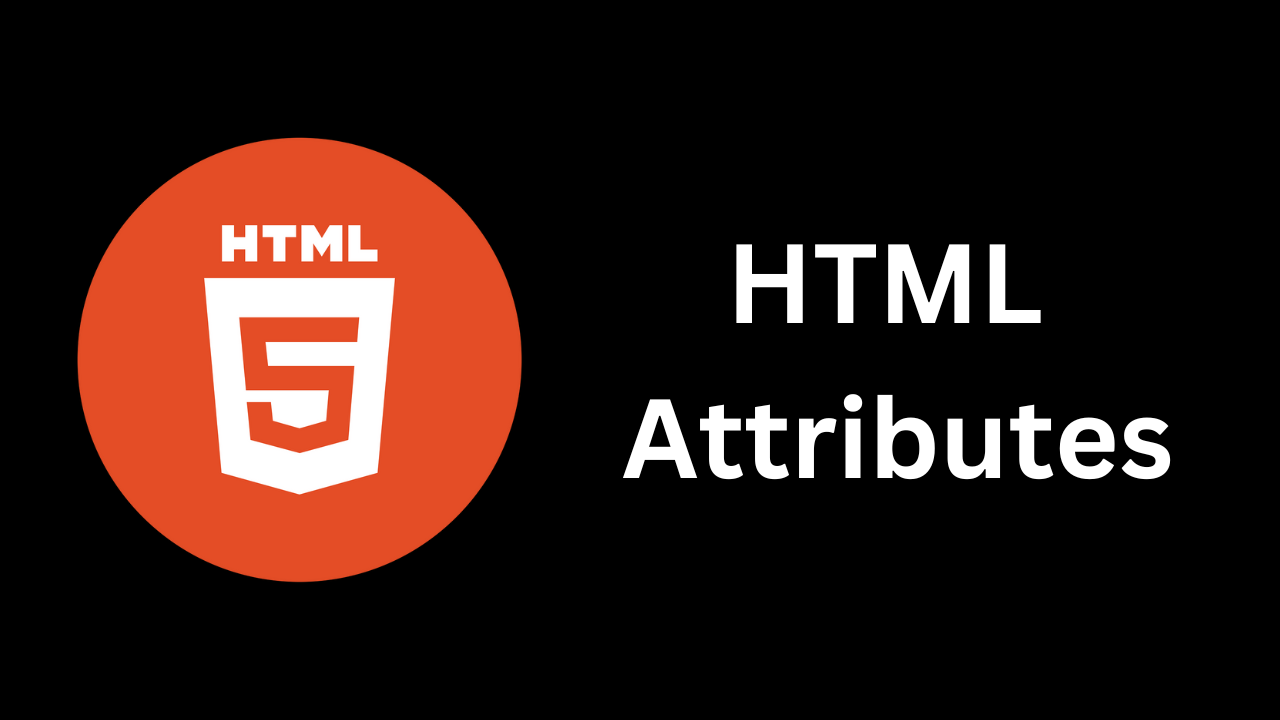Understanding HTML Attributes.
 Shivani Patel
Shivani Patel
HTML (Hypertext Markup Language) is the backbone of web development. It structures content on the web, and at its core, it consists of various elements and attributes. While HTML elements define the content and structure, attributes provide additional information about those elements. In this blog, we'll dive into the intricacies of HTML attributes, how they work, and why they are crucial for web development.
What Are HTML Attributes?
HTML attributes provide additional details about an HTML element. They are written inside the opening tag of an element and are always in name-value pairs. For example, in the <a> tag for a hyperlink, href is an attribute that specifies the URL of the link:
<a href="https://www.example.com">Visit Example</a>
In this case, href is the attribute name, and https://www.example.com is the attribute value.
Syntax of HTML Attributes
The syntax for HTML attributes is straightforward:
<element name="value">
Element: The HTML tag you are working with (e.g.,
<a>,<img>,<input>).Name: The attribute name (e.g.,
href,src,alt).Value: The attribute value (e.g.,
https://www.example.com,image.jpg,Sample Image).
Example
<img src="image.jpg" alt="Sample Image" width="300" height="200">
Here, src, alt, width, and height are attributes of the <img> element.
Types of HTML Attributes
1. Global Attributes
Global attributes can be used with any HTML element. They provide generic information or behavior that applies broadly. Common global attributes include:
id: Uniquely identifies an element on a page.
class: Assigns one or more class names to an element, which can be used for CSS styling or JavaScript manipulation.
style: Applies inline CSS styles to an element.
title: Provides additional information about an element, typically shown as a tooltip when hovering over the element.
2. Specific Attributes
These are attributes specific to certain HTML elements. For instance:
href(Hyperlink Reference): Used in<a>tags to specify the URL of the link.src(Source): Used in<img>,<script>, and<iframe>tags to specify the path to the media file or script.alt(Alternative Text): Used in<img>tags to provide a text description of the image, improving accessibility and SEO.type: Used in<input>tags to specify the type of data the input should accept (e.g.,text,password,email).
3. Boolean Attributes
Boolean attributes represent a true or false value and can be either present or absent. If a boolean attribute is present, it is considered true; if it is absent, it is false. Some common boolean attributes are:
checked: Used in<input>elements of type checkbox or radio to indicate that the checkbox or radio button is selected.disabled: Used to disable an input element or form control, making it unmodifiable.readonly: Used to make an input field non-editable.
Example
<input type="checkbox" checked>
<input type="text" readonly>
How to Use HTML Attributes Effectively
Ensure Validity: Always use attributes that are valid for the element you are working with. Invalid attributes will be ignored by browsers.
Maintain Accessibility: Use attributes like
altfor images andtitlefor additional context to enhance accessibility for users with disabilities.Optimize for SEO: Use attributes like
altin images andtitlein links to provide more context, which can benefit search engine optimization.Keep It Clean: Avoid using inline styles where possible; use external CSS for styling to keep your HTML clean and maintainable.
Common Mistakes to Avoid
Omitting Quotes: Always enclose attribute values in double or single quotes. Omitting them can lead to unpredictable behavior.
Overusing Inline Styles: Rely on external stylesheets instead of inline styles for better separation of concerns and maintainability.
Duplicate Attributes: Ensure each attribute is unique within an element to avoid confusion and errors.
Example of Mistake
<a href=https://www.example.com>Visit Example</a> <!-- Missing quotes around the URL -->
<a href="https://www.example.com" href="https://www.anotherexample.com">Visit Example</a> <!-- Duplicate attribute -->
Conclusion
HTML attributes are a fundamental aspect of web development that provide essential information about elements and influence their behavior. Understanding and using attributes correctly will not only improve the functionality of your web pages but also enhance their accessibility, SEO, and maintainability. Whether you're crafting a simple webpage or building a complex web application, mastering HTML attributes is a crucial skill for every web developer.
Subscribe to my newsletter
Read articles from Shivani Patel directly inside your inbox. Subscribe to the newsletter, and don't miss out.
Written by
